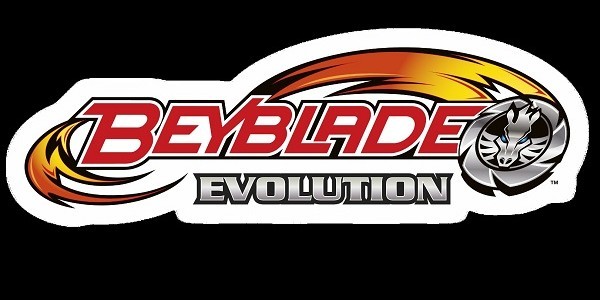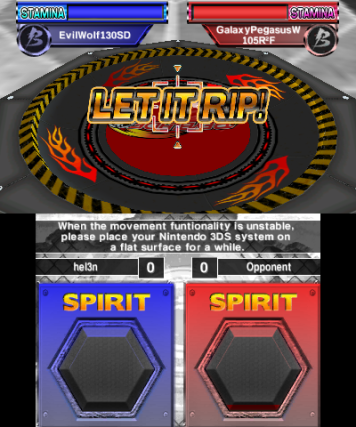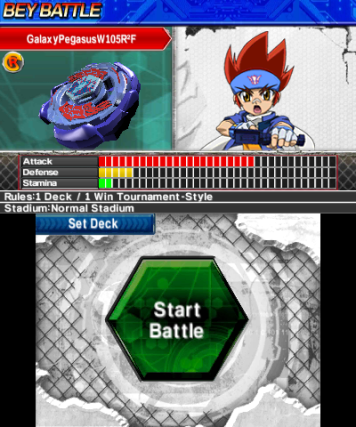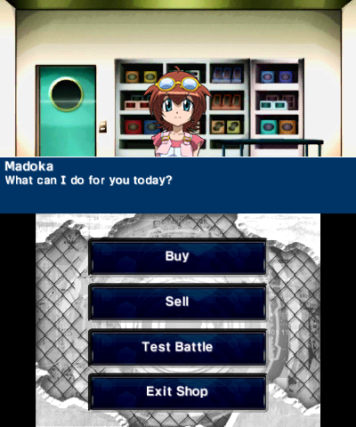Originally popular in the early 2000’s, Beyblades were a toy craze reinventing the spinning top, and subsequently taking over school playgrounds across the planet. Accompanied by a Manga and a popular Anime adaptation, a variety of characters advertised the product in a similar way to other globally popular products stemming from the region, colourfully creating a world around the toys. However, the craze died down and Beyblades seemed to all but disappear.
But then, in the last two years under the guise of a new character set and series, they have returned, and as such bring with them a new range of games. The latest of these, Beyblade: Evolution, is the first on Nintendo’s flagship 3DS system, but is it the breath of life the franchise needs to snare a new generation into appreciating the colourful tops?
“Beyblade: Evolution, is the first on Nintendo’s flagship 3DS system”
The premise of Beyblade: Evolution is simple; as a novice Blader, you aspire to win the Beyblade world championships, which begin in 50 turns. As you wait for the championships, you travel the city’s various blading hot-spots challenging characters from the latest Anime and periodically entering smaller tournaments, accruing money with which to buy new parts and improve both your collection as a whole and your individual Beyblades. Once the world championship has concluded, the game ends and you start again, further improving your collection. Needless to say, story isn’t exactly the main draw of this particular experience. After playing many games created as spin-offs from japanese toys and card-games, the interface was incredibly familiar, presenting a birds-eye view of the city and simple character shots when on location. However, usually there is some sort of deeper narrative and structure. Whilst the story is simple and functional, it’s about as weak as game narratives can be. The first few minutes involve a short introduction to the main characters, Ginga, Blader DJ etc, and aside from that there is next to no story or guidance to see.
The mechanics of the game are introduced over this first few encounters, as are the three stats you can improve in regards to your tools; Stamina, Defence and Strength. Stamina, the “spin” left in your Beyblade, Defence, the amount of hits it can take before it stops spinning, and Strength, the amount of stamina damage you can inflict per hit. Each Bey-Battle is a one-on-one duel in one of many varied stadiums, with the aim of either knocking the opponent out of the ring or continuing to spin after they stop and topple over. With rules unchanged from the toy range and manga/anime, these battles will be instantly familiar to anyone with prior knowledge of the franchise.
“Aiming with the 3DS’ gyroscope and sharply pulling the console towards you”
These battles are the core of the game, and honestly, there isn’t much to them. Each battle starts with a 3-point countdown, following which you launch your blade by aiming with the 3DS’ gyroscope and sharply pulling the console towards you. During the match you power up your blades using spirits, which charge through to level three, shot, once more, using the gyroscope.
Firstly, in a game obviously designed to use the 3D capabilities of the console, and going so far as to advertise the functionality as a feature, you would think the control scheme would easily accommodate for this. Whilst the pulling motion cleverly simulates the pulling of a Beyblade’s launch cord, the screen’s movement interferes with correct enjoyment of the 3D and demonstrates a logical oversight, as does the movement required to operate the aiming and gyroscope.
As you can imagine, following the actual release of the Beyblades in the game all control over them in incredibly light. Whilst this does nicely reflect the nature of real Beyblading, it does mean that in terms of actual bare-bones gameplay, Evolution is pretty damn light.
“One of the main strengths of the top franchise has always been the customisation aspects”
It’s only when you look at the systems behind the battling that you find the real value behind this title. One of the main strengths of the top franchise has always been the customisation aspects, with countless options to choose from, based on real-world parts. In combination with an excellent Physics system, the combat can be surprisingly deep once everything has been considered, regardless of the lack of actual button-pressing.
Also, there is a massive amount of fan-service on offer. With a large catalogue of blades available from the start for testing out, new blades can be tried out before being actually built and played. Whilst only potentially useful to a limited number of customers, It’s a nice feature which adds a lot of value for the more serious blading fan.
So is it any good? Well, the menus and story are decidedly bland, but the actual gameplay mechanics, if considered seriously, are surprisingly deep and addictive. For a bit of off-peak fun, it’s a good distraction with some replayability and a massive dollop of love for the fans, but nothing to really go dancing in the street about.
Disclaimer:All scores given within our reviews are based on the artist’s personal opinion; this should in no way impede your decision to purchase the game.













You must be logged in to post a comment.